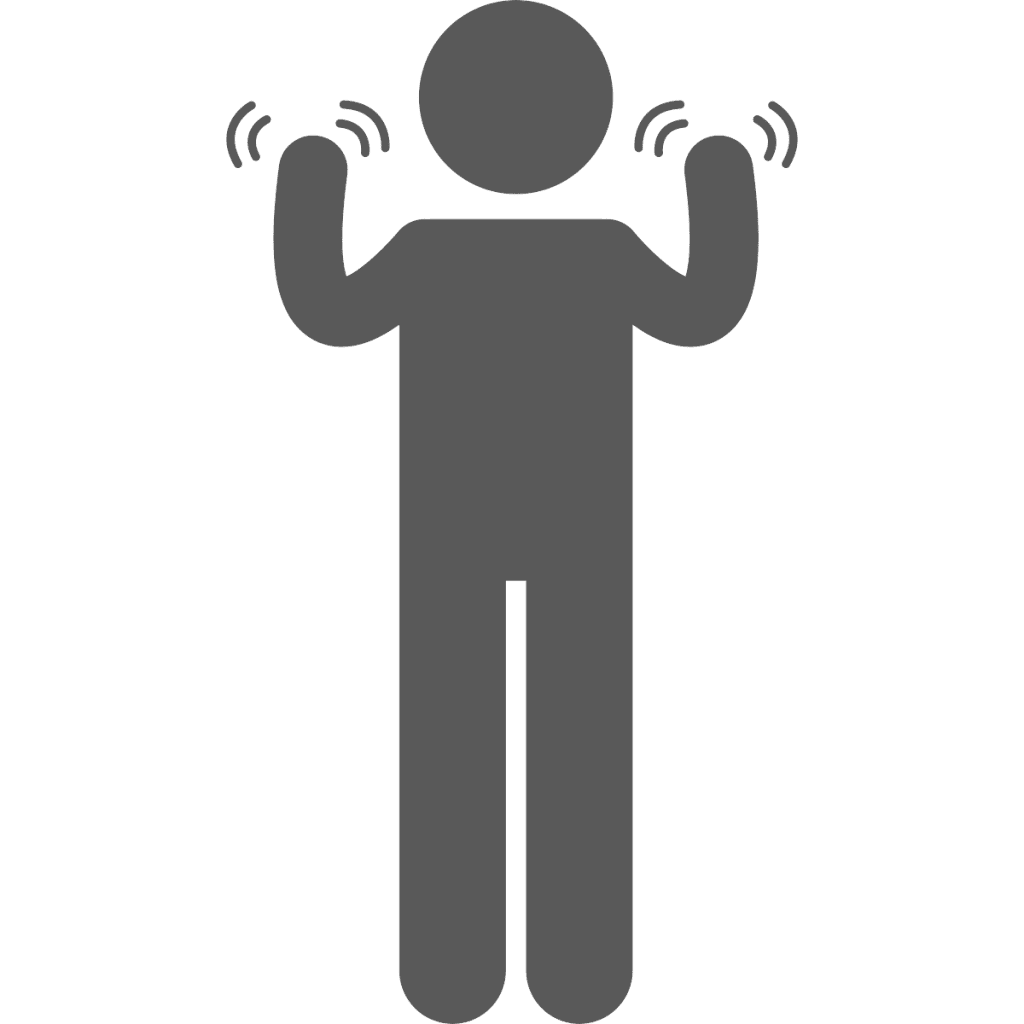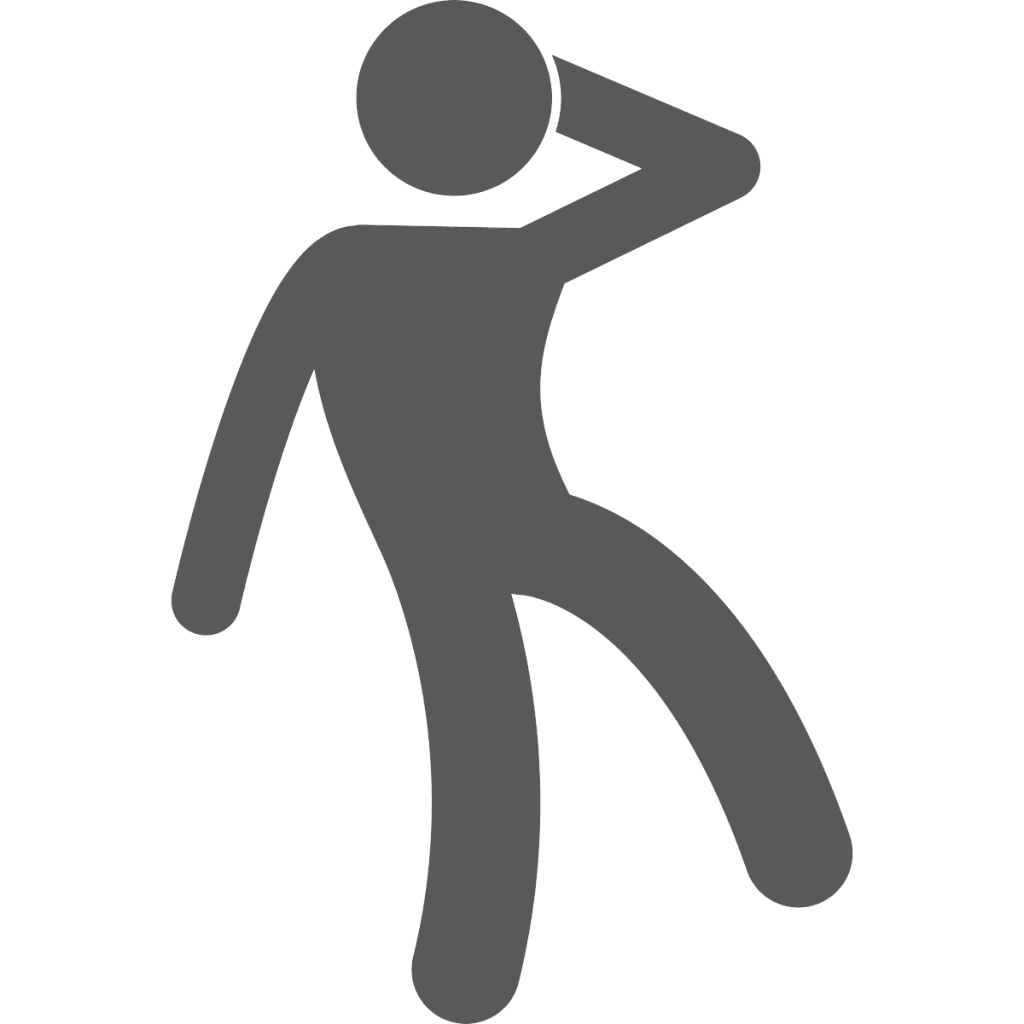How to Use Body Language During Pitches (Investor Survival Guide) – Summary
Our body can be a huge source of distraction for our audience. This article will help us make our pitch more impactful and more valuable to our investors and our audience.
First we’ll talk about things not to do with your body when you’re presenting. Then we’ll explore how do the right things with your body as you’re presenting. You can also check out the video below if you want a quick overview.
Article Summary:
- Stepping into the Pitch
- Why How You Stand and Deliver your Pitch Matters
- Short Attention Spans
- Pitches and Pitch Events are Inherently Distracting
- What Not To Do with Your Body While Pitching
- Unconscious Movement & Nervous Tics
- Shifting & Swaying
- Putting Your Hands in Your Pockets
- Sitting Instead of Standing
- Standing Perfectly Still
- Closing Yourself off to your Audience
- Overusing Your Hands
- Slouching or Leaning on a Podium
- Looking at One Spot the Entire Time
- What to Do With Your Body While Pitching
- Eliminate Unconscious Movement & Nervous Tics
- Stand Instead of Sitting, Every-time You Pitch or Present
- Open Yourself Up to Your Audience
- Use Your Hands & Move (Just Not Too Much)
- Keep Good Eye Contact and Shift Your View Point
- Wrap-up
Stepping into the Pitch
Imagine you are in-front of your investors about to pitch. You’ve spent weeks or maybe even months just trying to set this meeting up and countless time preparing, practicing, and readying yourself for this moment. You know you have a lot on the line and you have an extremely important audience member who could mean the difference between success and failure for your young company. You really want to and need to excel in this pitch.
There’s so much to think about, but let’s just focus on the basics for now. Basics like how you stand are important and can give you the presence and confidence you need to succeed. So, how should you stand and how do you use your body effectively when presenting?
Check out our pitch review and coaching services if you need 1-on-1, specialized advice in making your best pitch deck.
Why How You Stand and Deliver your Pitch Matters
When you’re pitching you’re usually physically in-front of your investors or virtually in-front of them through a video conference. In both of these common pitch scenarios, people can see you, your body, your face, your hands, and everything else.
Short Attention Spans
People have very short attention spans. They can get easily distracted. And many things can distract them. We have a lot of things already distracting us every day. We’ve got buzzing watches, we’ve got phones that have notifications, we’ve got emails, and all kinds of things, birds out the window, what we want to have for lunch, there’s lots of things that are going to be distracting our audience already.
Pitches and Pitch Events are Inherently Distracting
From your pitch deck in the background, to you talking, and all the other audience members, your investors already have a lot to focus on. In fact, it’s a lot going on for them even when everyone is laser focused on your presentation. Because of the high input nature of the event we want to help you understand and minimize anything that might detract or distract from the pitch.
What Not To Do with Your Body While Pitching
You definitely don’t want to move around too much. This is especially true if you’ve got a lot of stuff going on in the slide behind you, you’re talking about something they need to pay attention to and work to understand.

Unconscious Movement & Nervous Tics
Eliminate unconscious, undirected movement that doesn’t serve a purpose or help you make your point in your pitch. Pacing around, getting fidgety, touching your hair, doing things with your face, or moving your hands around alot, are all unconscious, undirected movements that don’t add to your pitch. And they are all very, very distracting.

Shifting & Swaying
Shifting is another common nervous tic. Shifting is isn’t in and of itself inherently bad, but shifting on very consistent and repetitive way is a problem. If you shift a little bit here and there it’s okay. But if you’re doing this the entire time, back and forth the entire time, that’s extremely distracting. Even when it’s not a ton of movement. So it’s a nervous tick to look out for.

Putting Your Hands in Your Pockets
Another one is to put hands in pockets and take them out, put hands in pockets and take them out. I see that one a lot too with guys more often, the hands in pockets thing. Make sure you don’t put your hands in your pocket, and you don’t do a lot of pocket in and out movement. Plus, we think keeping your hands in your pockets might give your investors the impression that you have a million dollars in there and you might not need theirs. We’re just joking – as this might actually help negotiations – but seriously, don’t put your hand in your pockets when you are presenting to investors.

Sitting Instead of Standing
Sitting literally takes your breath away. It diminishes your energy and your appearance of having a confident strong pitch. There are a few times where sitting is necessary, but if it’s not make sure you are not sitting. Presentations done while sitting will not be as good and will not be received as well as pitches made standing.
I get that if you’re presenting to somebody over lunch, you’re probably not going to stand up in the restaurant. But other than that really try to stand as much as you can. It’s a very beneficial thing to do. If you’re presenting, and if especially if you’re presenting with slides, never sit.

Standing Perfectly Still
You really don’t want to just be perfectly still the whole time that you pitch. But you don’t want to move around too much either. Both extremes are distracting. Look out for any unconscious or repetitive movement and look out for the total lack of movement.

Closing Yourself off to your Audience
Other don’ts with how you stand, don’t stand in such a way that makes you look closed off. Don’t have your arms all crossed and all tight the whole time. That makes you look like you’re not interested in talking, you’re not interested in what they have to say, you don’t care, you’re very closed off when you have your arms crossed. Don’t do that. Don’t cross your arms. Make sure your arms are loose and not crossed.
You can close yourself off with your hands too. Presenters tend to put their hands in front of themselves (near their nether regions if you will). It’s a human evolutionary nervous tic to put your hands in front of your softer spaces in your body, especially for guys to protect themselves. Doing this projects tightness and it feels very unwelcoming to the audience whether they realize it or not.

Overusing Your Hands
You don’t want to be too distracting with your hands. You don’t want to be doing all this crazy stuff the whole time, and pointing to things over here, and all the things… You definitely want to use them when we need to, you make a point. You can do things like list things off, one, two, and three. You can use your hands to give a little bit more of that information about what you’re talking about to your audience just a little bit more, but not all the time.

Slouching or Leaning on a Podium
Remember when we were kids and we tried to avoid the imaginary lava? Well that’s what you should think of the podium as, if there is one. Don’t stand behind it, don’t touch it, and definitely don’t lean on it – it’s lava silly!
The podium is a tempting hide behind prop that is often times available at pitch venues. Similar to sitting, anything we do to suppress our breathing or close ourselves off to our audience can take away from our pitch. Avoid the Podium. And always be in front of it. When you notice your hand unconsciously go for it mid-pitch, just remember – It’s Lava! It will burn up your entire presentation and leave a lumpy land mass in it’s wake 🙂

Looking at One Spot the Entire Time
On one end of the pitch spectrum there’s too much movement and over-animation. But on the other end, there’s the stoic, robotic, cold, dry, laser focused presenter. Don’t stare at one spot the entire time. You might be freaking out the people in that direction and your other audience members on the periphery will probably be losing interest or wondering what you are looking at or who you’re talking to. You want them to feel like you’re talking to them too.
What to Do With Your Body While Pitching
Now that we’ve covered a lot of what we don’t want to do, we’ll shift our focus to doing what’s right. Use these tips to make your pitch interesting, less distracting, and more fully you without all the nervous fluff and weirdness.
Eliminate Unconscious Movement & Nervous Tics
One of the ways to get rid of that is to watch yourself practice and see what are your repetitive tics or nervous, unconscious behavior might be before you are actually in a live pitch scenario. Just like dealing with stage fright, you want to make sure you overcome nervous behavior of any kind in practice. This way we don’t subject our audience to our nervousness while presenting and we make our pitch more impactful and valuable. In practice, try to identify your nervous tics and then work to get rid of what’s causing them so they don’t control you.
Keep an eye out for your nervous tics and practice them out. You might find when you fix one, another one pops up in a different form. In general, anything that is not designed to help you pitch better is probably going to hurt your pitch. In this regard, if you didn’t plan for it and you are doing it, this is probably a sign of a nervous tic that you can practice out.
Stand Instead of Sitting, Every-time You Pitch or Present
Standing gives you presence automatically in a way that sitting never will. Standing gives you authority and it gives you presence and people pay attention to you. It’s very important to stand when you present.
It’s also really good for your diaphragm. Your diaphragm is positioned in such a way that you can talk more, and louder, and longer when you’re standing. When you’re sitting it’s much harder to do so. And so standing can be very beneficial for that reason as well, just a physiological reason. So make sure you stand.
A Yoga Moment: Standing Up Straight
Stand up straight, chest out, shoulders back, and give yourself that nice straight posture. You want to stand with your legs about equidistant to your shoulders, so that you’re very well platformed. You’re not going to fall over. You’re not going to blow over in a windstorm. Standing like this will help you prevent swaying side-to-side and leaning too much because you have your center gravity in the right place above your feet. You should feel solid.
Open Yourself Up to Your Audience
While you are pitching, you want to feel open and confident. You also want your audience to hear what you have to say. That’s the kind of feeling you should have with your body rather than this kind of closed off, arms crossed sort of thing.
Use Your Hands & Move (Just Not Too Much)
You do want to move a little bit during your presentation. This helps to eliminate the robotic, nervous look that not adding some conscious movement in conveys.
One thing you should definitely do is use your hands a little bit while you’re talking. I use my hands a little bit more than most. I have a bit of Italian in me, so we talk with our hands. But you do want to use them. You don’t want to have them just be completely static and not moving the entire time. And it’s kind of distracting that you’re still. So we do want to use them.
A Yoga Moment: The T-Rex Pose
Position yourself in a strong stance with your feet equidistant from each other. With your arms by your side, practice just moving you forearms and hands. Your elbows will basically stay by your side the entire time, but your hands and lower arm are free to move in directed ways that help your pitch.
This is what we at Pitch Deck Fire call the T-Rex pose. I want you to keep your hands in T-Rex pose throughout your presentation. This way your are not moving your hands up, down and all over the place, all the time. Think – “T-Rex arms”
You might move a little bit more than this when we’re pointing to something on a slide, but that’s about it. Focus on not going too more than T-Rex arms when pitching
Keep Good Eye Contact and Shift Your View Point
You want to keep good eye contact with our room, look around the room while you are presenting. Make sure to cover the entire room and consciously turn your head to make sure you still have the attention of each section of your audience. It will feel to them like you are talking more directly to them and it will help keep your audience and investors interested in what you are saying to do this.
For this reason, you might consciously move a little bit when you want to point to something. You might move to another part of the room and talk to them for a second. Keep all movement directed, steady, calm, and make sure when you are moving either our hands or our body, we do so at a time that is chosen.
It’s not a nervous tic. It’s something where I say, “Right now I want to make this point. So I’m going to move like this. I’m going to make that point. I’m going to move in this other way. I’m going to point at this thing. I’m going to look at a different person. I’m going to do something for a reason only.” No nervous tics only conscious, directed, powerful, meaningful movements.
Wrap-up
There you have it. That’s how to use your body language and how to stand when you’re pitching. Hopefully you guys found some value in that today. If you have any thoughts on body language that you use when you pitch, or ideas on how to use body language, maybe even horror stories of bad body language you’ve seen I’d love to hear about it in the comments below.
If you have any ideas for upcoming Pitch Hacks we have a link below as well. I’d love to hear your ideas and thoughts, and answer your questions in an upcoming video.
We put out new Pitch Hacks every single week, so give us a little thumbs up or subscribe and you’ll find out about our next Pitch Hack. Thank you so much for joining. Again, I’m Stacie with Pitch Deck Fire. I hope to see you guys here again soon.
Happy pitching!
Suggest an Upcoming Pitch Hack here: https://info.pitchdeckfire.com/pitch-hack-suggestions
For even more pitch hacks visit us here: https://resources.pitchdeckfire.com/tag/pitch-hacks
**Subscribe for more Pitch Hacks in your inbox every week**
Need help with your pitch? Pitch Deck Fire specializes in pitch deck design and presentation preparation. Sign up to speak to a project lead about your pitch deck, sign up here: https://pitchdeckfire.com/pitch-deck-project-initial-steps/
Seeking funding or preparing for a pitch? Find more resources, check out our other helpful articles and posts here: Resources.PitchDeckFire.com









